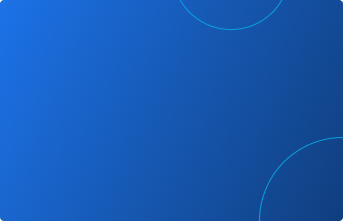Your model airplanes aren’t just toys. You worked hard to assemble them, or perhaps they were passed down to you by a friend or relative and now hold sentimental value. Nevertheless, each model is a point of pride. But you may not always have the space to store them in your home. In this case, self storage can be the perfect storage spot to keep your model airplane collection in mint condition, protecting them from environmental factors such as direct sunlight, UV damage, and dust.
Follow these tips to store your model airplanes properly for long-term storage.
1. Keep an Inventory of Your Model Airplane Collection
Maintain an up-to-date list of what you own so nothing gets lost in the shuffle. Writing down important details like what glue or material you used or where the weak areas are on each plane doesn’t hurt either. This way, you can always keep the facts straight, even after years have passed. Also, if you pass down your model plane collection to a friend or family member, they will have specific information that’s useful in preserving the condition of model airplanes.
2. Prepare Airplane Models for Storage with Preservation Techniques
Using a vacuum hose and soft brush is the best way to clean the surfaces of model airplanes before storing them, according to Maria VanVreede, who works at the National Model Aviation Museum in Muncie, Indiana, as Museum Collections Manager and is in charge of the preservation and methods of storage of 1,500 model airplanes. As VanVreede writes on the museum’s blog, be sure to avoid touching the model with the vacuum hose, as the suction could cause accidental damage to smaller pieces on the model.
Never use chemicals when cleaning your models, VanVreede warns. Many solvents can leave a chemical residue on your model planes that can harm their paint or finishes.
Also, as VanVreede suggests, “If [the model] can be disassembled, it should be stored disassembled.” Typically, radio control models and larger free-flight models will come apart easily. Smaller free-flight models, static models, and control line models often don’t come apart at all and must be wrapped and assembled, which can be tricky since their sizes vary and are irregular.
Another thing that will protect your model airplanes in storage? “Keep anything you’re not showing off boxed or wrapped in clean, unbleached muslin,” explains VanVreede. “That will help keep the dust off, meaning you have to clean them less often.”
Custom boxes, such as acid-free boxes with acid-free tissue paper or plastic tubs lined with plain linen muslin, are best when storing smaller models and parts such as detachable wings, according to Amber Oatman, facility manager at Watson & Taylor Self Storage in Austin, Texas. Oatman has personal experience with long-term storage of model airplane collections since her husband and fellow facility manager, Chris, collects them.
Oatman also recommends putting drying packets or silica gel packets in the boxes or tubs to keep moisture away from the paint, which could cause changes in color and ruin the finish on your planes.
“It’s beneficial to lightly coat metal parts with a thin film of oil to keep rust at bay [as well],” explains Arthur Pesch, Senior Manager of Service and Support at Hobbico, parent company of Great Planes and Top Flites and the largest model hobby company in the world. Pesch, an avid modeler for 59 years, says this is especially important for modelers in hot, humid climates like Florida, where the air is salty from the ocean, as parts like the landing gear, fuel tank, or any electrical components exposed to air are more susceptible to damage.
3. Opt for Climate-Controlled Storage
Although preservation techniques will help prevent damage to airplane models in self storage, modelers can take another precaution by renting a climate-controlled storage unit. Climate control is useful in protecting delicate items like photos, antiques, musical instruments, and collectibles such as model airplanes.
Units equipped with climate control maintain a consistent temperature (usually between 55-85°F) by acting like a heater or air conditioner to keep sensitive items from getting damaged by external conditions. Though most people store their model planes in garages without heating or air-conditioning year-round and have no problems, Pesch believes “climate-controlled storage is nice to have when storing planes.”
That’s because many materials used in building model airplanes, like balsa wood and tissue, expand when exposed to heat and contract when exposed to cold temperatures. Combined with long periods of time in storage, this can result in brittle wood and peeling coverings on your models.
“The more stable the environment, the more you’re going to slow the brittle process down,” VanVreede adds. “You’re not going to stop it entirely… but that will make it less likely for you to put a thumb through [your plane].”
Climate-controlled units also offer protection from excessive moisture by keeping humidity levels stable. “Besides crashing into the ground, the worst enemy [of a model airplane] would be water or excessive moisture,” says Pesch. “Most planes, except for foam ones, are made of different woods. Should they get wet, parts will warp.”

Reserve Climate-Controlled Storage Units Near You
Find Storage4. Shelve or Hang Your Model Airplanes in Your Unit
You’ll need a unit that can handle the array of sizes of your planes, as well as the quantity. If your collection is particularly large, you may need a unit of adequate size, such as 10×10 or 10×20. No matter what storage unit size you get to store your model airplanes, Oatman says you may want to invest in plane racks or shelving if you have wall space.
Everything should be stored at least six inches off the floor to reduce the risk of damage from pests or floodwater. Shelves should also be big and strong enough to support the models. Glass shelves are great for a clean, appealing display, especially for static models.
If shelving isn’t an option, you could hang your planes with custom-made display racks, which Pesch says most modelers do anyway for a dynamic display of their collection and to make the most of available wall space.
“At the National Model Aviation Museum, we’ve utilized our ceiling as a storage space, hanging models in custom-made bridles,” VanVreede says, adding that models should never hang off of bare wire, which could cut them. Instead, she suggests sticking wire through small hoses (found in the plumbing section of hardware stores).
Whether you use wall-mounted displays, display stands, or the garage ceiling, proper hanging and shelving techniques will help reduce accidental damage and keep your planes in optimal condition.With the right preservation, a climate-controlled storage unit, and proper shelving or hanging, you can conserve the hard work you’ve put into your model airplanes. Let Storage.com help you find a climate-controlled storage unit to preserve your collection.







